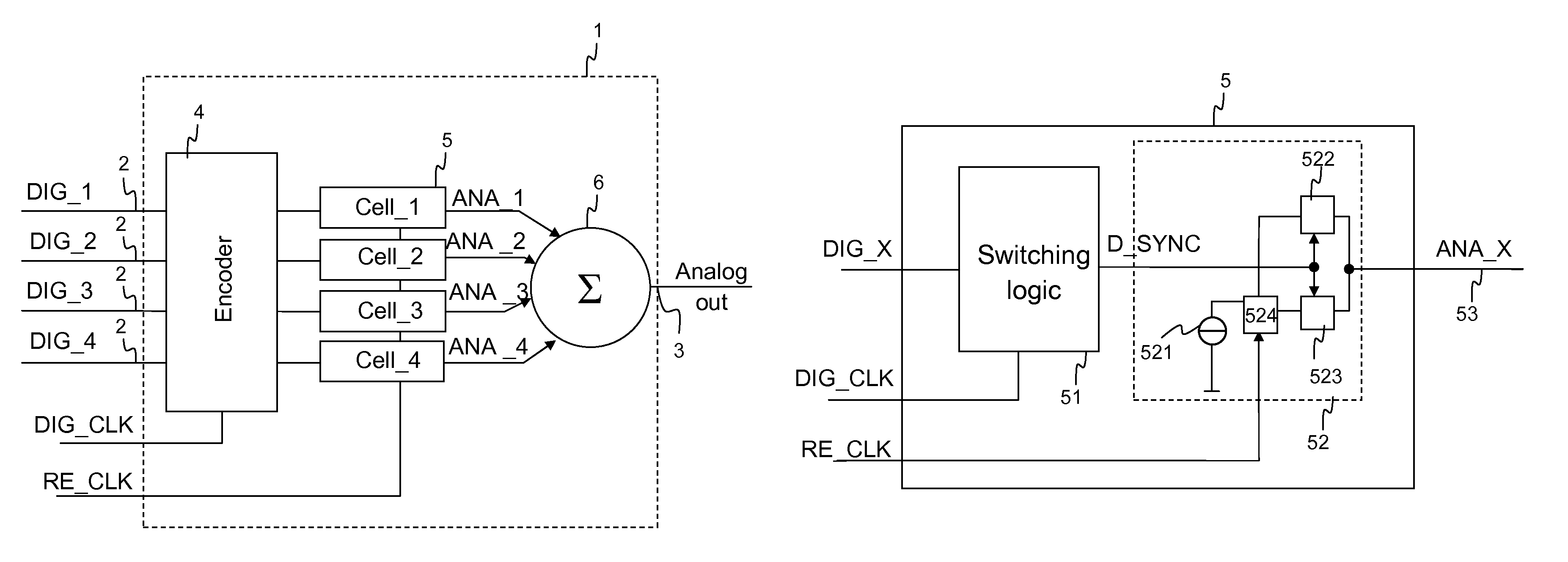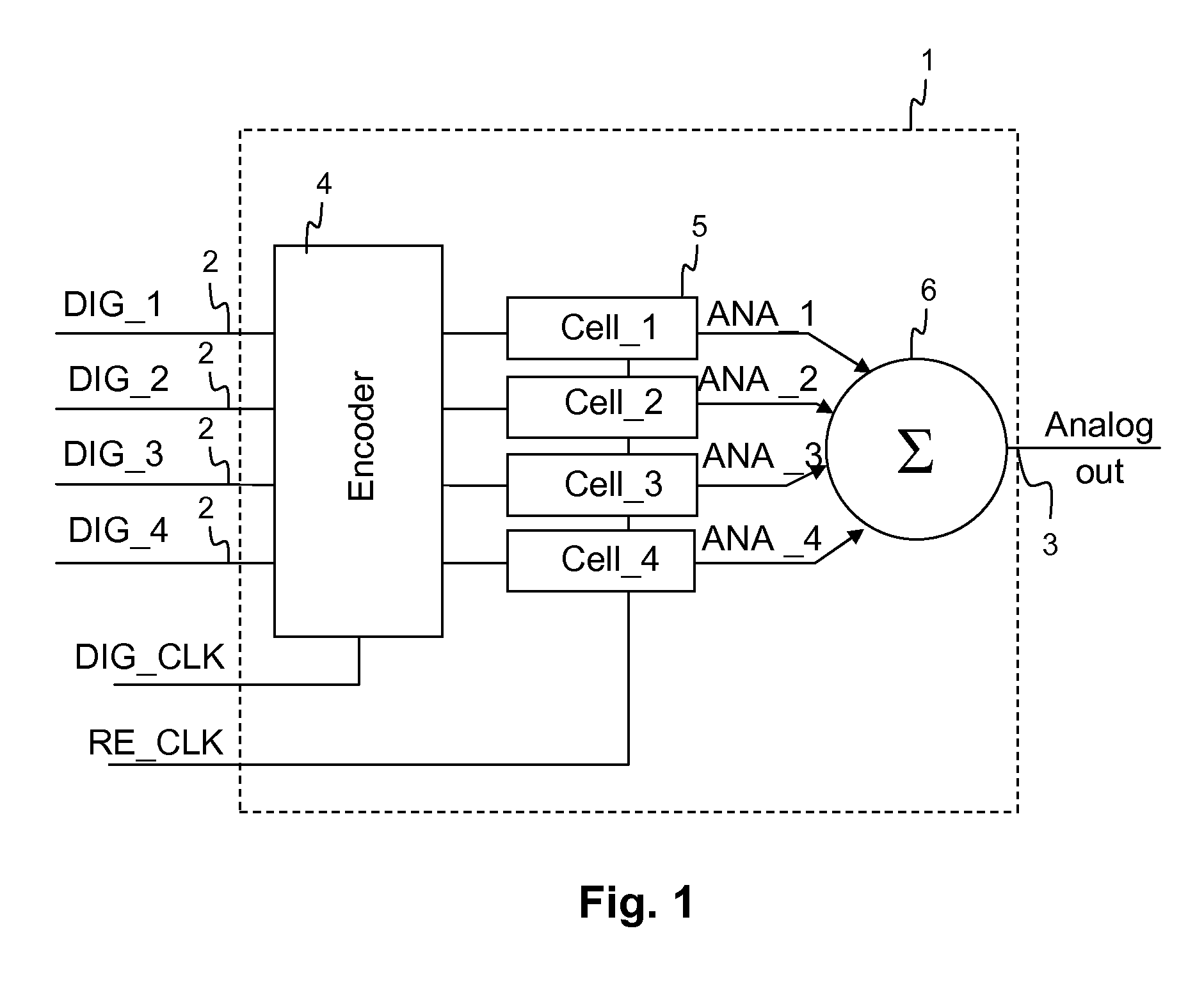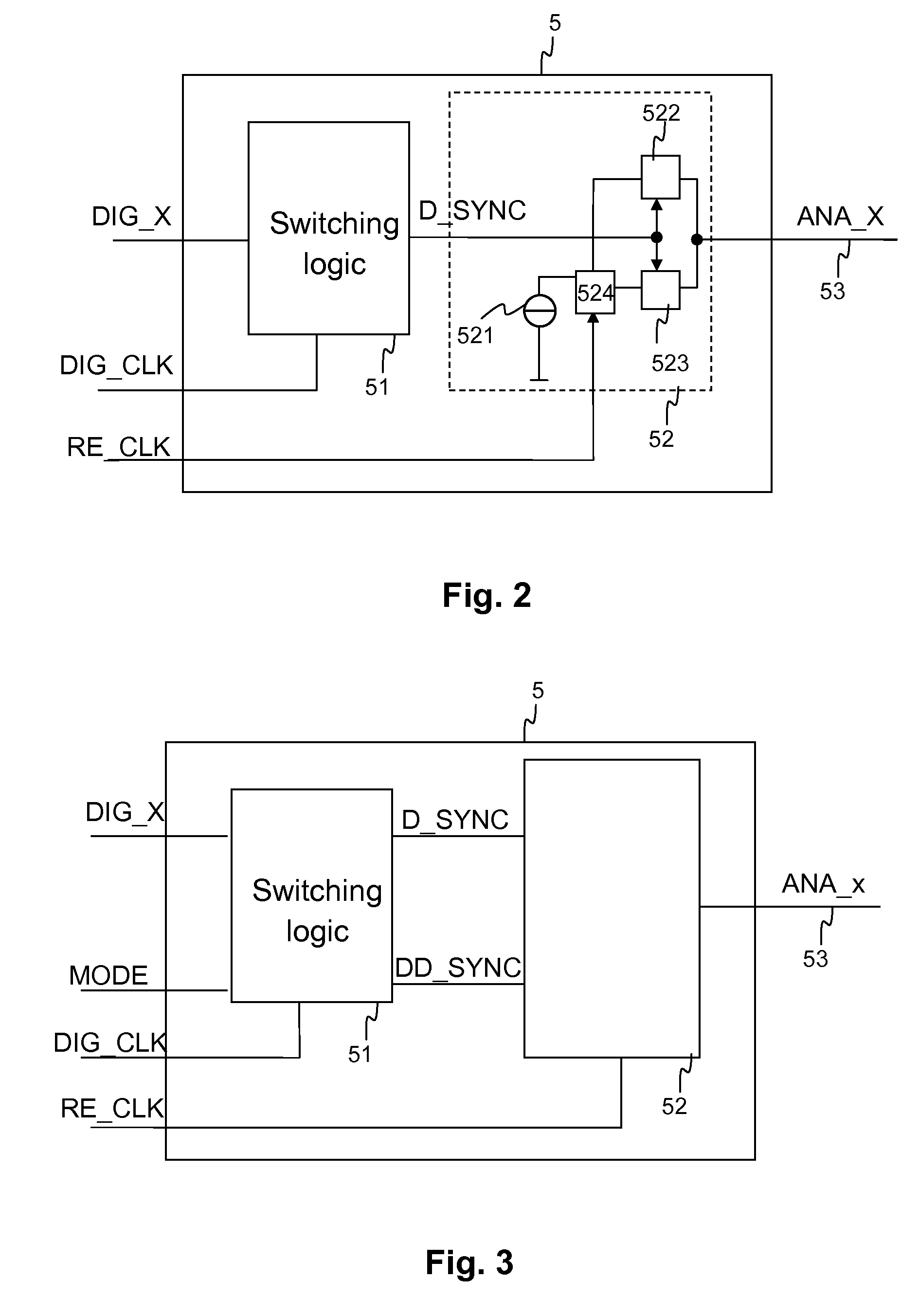Digital-to-analog converter with local interleaving and resampling
a digital-to-analog converter and local interleaving technology, applied in the field of digital-to-analog converters, can solve the problems of time glitches between analog equivalent output cells within the dac, poor accuracy of the fastest conversion method, and inability to meet the requirements of time-consuming and laborious, so as to reduce design constraints
- Summary
- Abstract
- Description
- Claims
- Application Information
AI Technical Summary
Benefits of technology
Problems solved by technology
Method used
Image
Examples
Embodiment Construction
[0056]FIG. 1 shows a first exemplary embodiment of a DAC_1 according to the invention. The DAC_1 comprises a plurality of digital input ports 2. At the digital input ports 2, a plurality of digital input signals is applied. For reasons of simplicity, only four digital input signals DIG_1, DIG_2, DIG_3 and DIG_4 are shown. Each of the digital input signals DIG_1, DIG_2, DIG_3 und DIG_4 are binary rated and provided to an encoder unit 4. Downstream to the encoder unit 4 four analog output cells 5 are arranged to selectively generate partial analog signals ANA_1, ANA_2, ANA_3 and Ana_4 in response to the digital input signals DIG_1, DIG_2, DIG_3 and DIG_4. The analog output signals ANA_1, ANA_2, ANA_3 and Ana_4 are provided to a summing unit 6. In the summing unit 6 the partial analog signal ANA_1, ANA_2, ANA_3 and ANA_4 are summed to obtain the analog output signal analog_out at the analog output port 3 of the DAC_1.
[0057]The encoder unit 4 of the DAC_1 operates to translate the four ...
PUM
 Login to View More
Login to View More Abstract
Description
Claims
Application Information
 Login to View More
Login to View More - R&D
- Intellectual Property
- Life Sciences
- Materials
- Tech Scout
- Unparalleled Data Quality
- Higher Quality Content
- 60% Fewer Hallucinations
Browse by: Latest US Patents, China's latest patents, Technical Efficacy Thesaurus, Application Domain, Technology Topic, Popular Technical Reports.
© 2025 PatSnap. All rights reserved.Legal|Privacy policy|Modern Slavery Act Transparency Statement|Sitemap|About US| Contact US: help@patsnap.com



